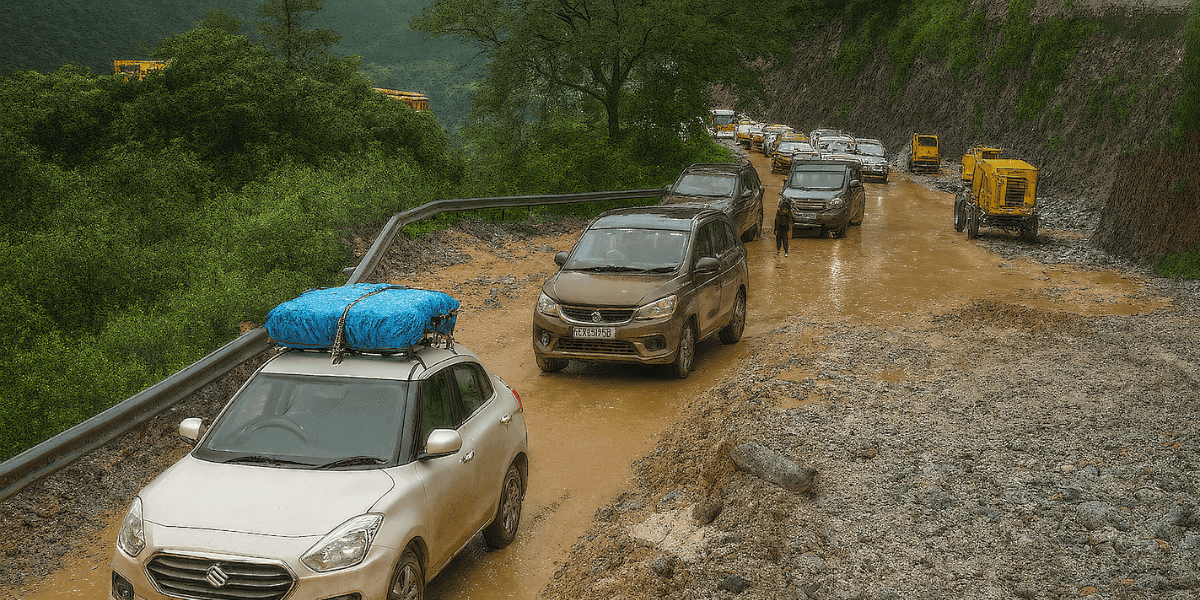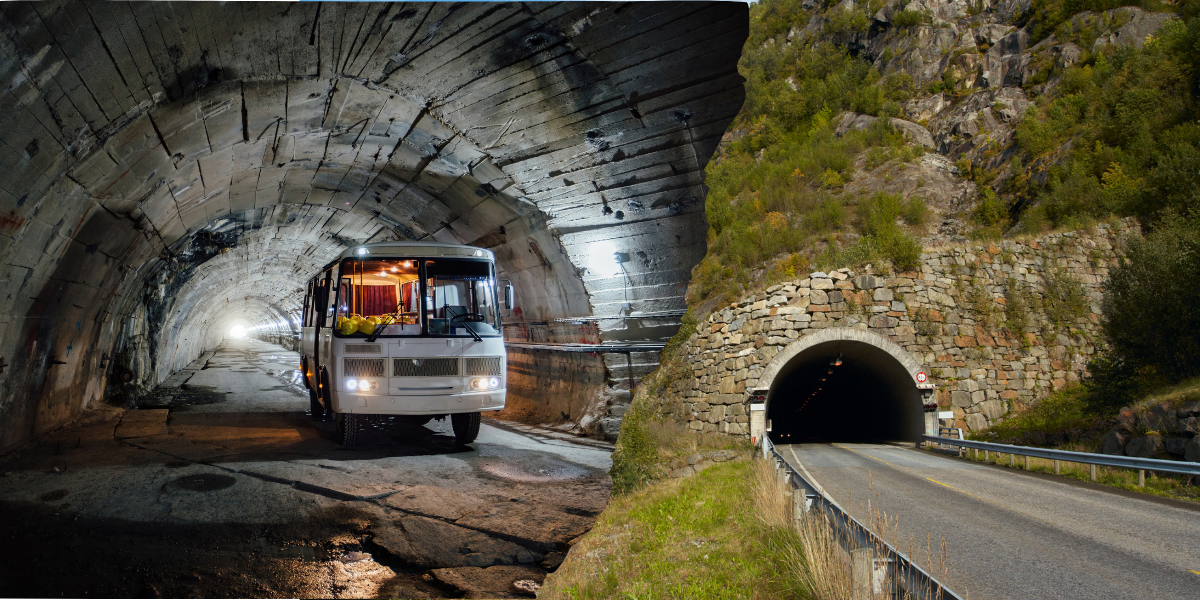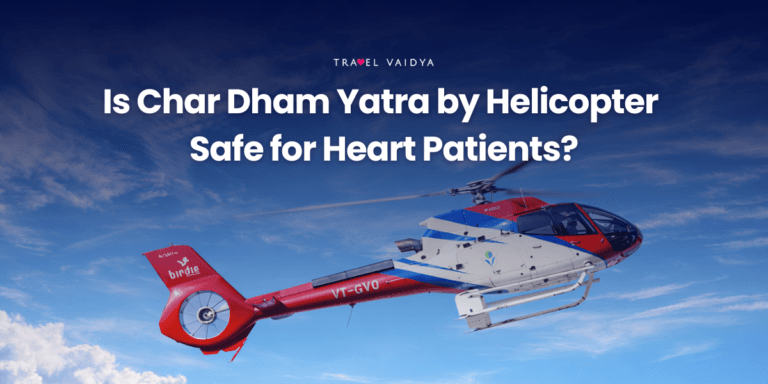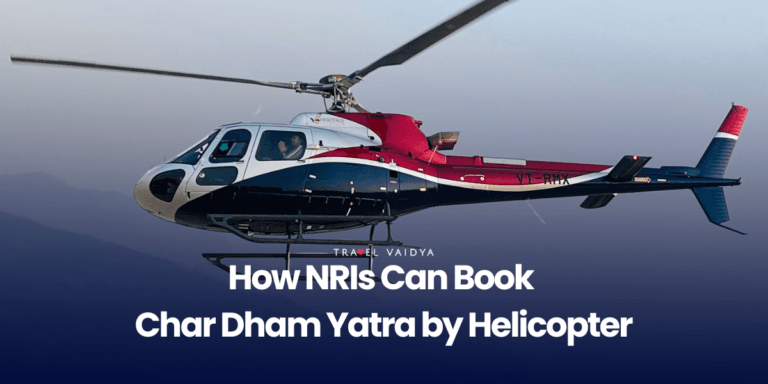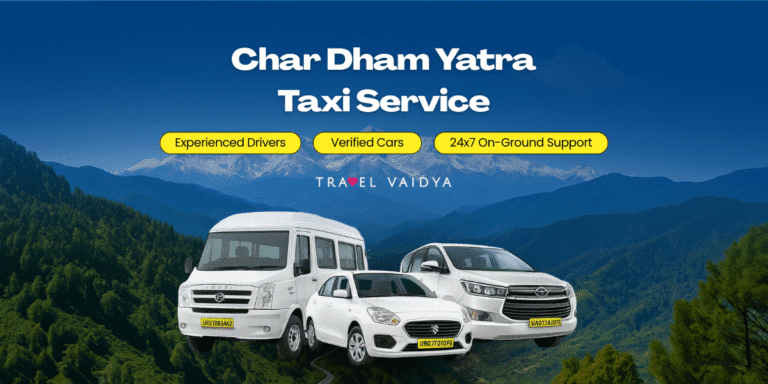Yes, you can drive to Badrinath in your own car between May and October, when the temple is open and roads are accessible. The route from Rishikesh to Badrinath is about 320 km and passes through key points like Devprayag, Rudraprayag, Karnaprayag, and Joshimath. The final 45 km stretch from Joshimath to Badrinath is narrow, landslide-prone, and operates on a time-controlled one-way system managed by BRO (Border Roads Organisation). No special permit is needed for private cars, but online Char Dham Registration is mandatory. Avoid traveling during monsoon (July–August) or after mid-November due to road closures from heavy snowfall.
Table of Contents
Is the road to Badrinath safe for private cars?
Yes, the road to Badrinath is mostly safe for private cars, especially if you’re driving between May to June or mid-September to October. The route is fully motorable but includes sharp turns, steep climbs, and narrow patches, especially after Joshimath. From Rishikesh/Haridwar, it’s around 295 km, taking about 10–12 hours with breaks.
What to keep in mind:
- Avoid the trip during July and August—landslides are common
- Drive only in the daytime
- Follow convoy timings after Joshimath
- Make sure your car is in good condition
- Fill fuel in Rudraprayag or Joshimath
- You should be comfortable driving in the hills—it’s not ideal for beginners or nervous drivers
Which route is best for driving to Badrinath?
The most reliable and commonly used route to drive to Badrinath from Delhi or Haridwar is:
Rishikesh – Devprayag – Srinagar – Rudraprayag – Karnaprayag – Chamoli – Joshimath – Badrinath.
This route is fully motorable and has regular stops for fuel, food, and accommodation.
Approximate distances from key cities:
- Delhi to Badrinath: 535 km
- Haridwar to Badrinath: 320 km
- Rishikesh to Badrinath: 295 km
Key travel tips:
- Refuel at Srinagar or Rudraprayag—few fuel stations after that
- Roads are wide till Joshimath, then driving is allowed in convoys due to hilly terrain
- Break journey at Pipalkoti or Joshimath for comfort
- Avoid night travel; most accidents and delays happen after dark
- Travel time from Haridwar is around 10–12 hours, depending on traffic and breaks
Also Read:
Badrinath Location And Travel Guide
How to Reach Badrinath Temple
Do I need a permit to drive to Badrinath?
No, you don’t need any special permit to drive your own car to Badrinath. The road is open to private vehicles during the official travel season (May to October). However, it’s important to carry all the basic vehicle and personal documents, especially if you’re crossing state borders.
Carry these documents with you:
- Valid driving license
- Vehicle registration certificate (RC)
- Insurance papers (valid and active)
- PUC (Pollution Under Control) certificate
- Government ID (Aadhar, PAN, or voter ID)
What is the road condition from Joshimath to Badrinath?
The stretch from Joshimath to Badrinath is around 45 km and takes about 1.5 to 2 hours by car. The road is single-lane in many places and passes through steep hills and zones prone to landslides, especially during monsoon. While there’s no fixed convoy or gate system anymore, vehicle movement is restricted after 7 PM for safety reasons.
Things to keep in mind:
- Only daytime driving is allowed—avoid late evenings
- Road repairs and maintenance are common, so minor delays are normal
- Be cautious of blind turns and ongoing work zones
- Always give way to uphill traffic
- Avoid this stretch during heavy rains or alerts from local authorities
Is it safe to drive to Badrinath with family?
Yes, you can drive to Badrinath with your family, it’s something many people do every year. But let me be honest, it’s not like driving on flat highways. The roads are hilly, with a lot of curves and sharp bends. If you’re confident driving in the mountains and have done it before, you’ll manage fine. Otherwise, it’s better to hire a local driver from Rishikesh or Haridwar.
- Travel between May–June or Sept–Oct for safer roads
- Don’t drive all the way in one day—break at Rudraprayag or Joshimath
- Avoid driving after 7 PM—vehicle movement is restricted
- Carry motion sickness tablets, warm clothes, snacks, and water
- Make sure your car is serviced and can handle mountain roads
- If you’ve never driven in hills, let someone experienced take the wheel
When should I avoid driving to Badrinath?
You should avoid driving to Badrinath during the monsoon months (July to August). This is when landslides, roadblocks, and sudden weather changes are quite common. Roads become slippery and with less visibility. Also from November to April, the temple remains closed and the route is completely snow-covered, so it’s not accessible by car.
Avoid driving when:
- It’s raining heavily or a landslide warning is issued
- You’re planning a trip between mid-July and August
- The temple is closed for the season (usually after Diwali)
- You don’t have much experience driving on hilly roads
Fuel stations on the way to Badrinath
IndianOil Fuel Station, Guptkashi – Guptkashi, Uttarakhand
HP Petrol Pump, Chamoli – Chamoli, Uttarakhand
Bharat Petroleum, Joshimath – Joshimath, Uttarakhand
IndianOil Fuel Station, Pipalkoti – Pipalkoti, Uttarakhand
HP Petrol Pump, Karnaprayag – Karnaprayag, Uttarakhand
What are the risks of driving to Badrinath in monsoon?
Driving to Badrinath during the monsoon (July to August) isn’t a great idea. The roads are open, but landslides, falling rocks, and water on the roads make it risky. Even if you start the trip, you might get stuck somewhere due to roadblocks. The weather changes fast, and local authorities can stop vehicle movement without warning.
Here’s what can go wrong:
- Roads get blocked because of landslides
- It’s hard to see clearly when it rains or gets foggy
- Roads become slippery and muddy
- Delays are common, and you might have to turn back
Is it better to hire a driver or drive yourself to Badrinath?
If you’re confident driving in hills and have done similar trips before, driving yourself to Badrinath is fine. But if you’re not used to narrow hill roads, sharp turns, or unpredictable weather, it’s better to hire a local driver, they know the route and terrain well.
Think about hiring a driver if:
- You’ve never driven in the mountains before
- You’re travelling with family or seniors
- You want to enjoy the views without stress
- You’re not comfortable handling bad patches or long drives
Badrinath Taxi Service by Travel Vaidya
If you’re not sure about driving yourself, Travel Vaidya can arrange well-maintained taxis with local, experienced drivers who know the route inside out. It’s a safer and stress-free option for families, senior citizens, or first-time hill travelers.
📞 Call/WhatsApp: +91-9990696688
📧 Email: sales@travelvaidya.com
🌐 Website: www.travelvaidya.com

What should I carry while driving to Badrinath?
Carry warm clothes, dry snacks, water, basic medicines, and a power bank. Make sure your car has a spare tire, jack, and tool kit. You should also keep your vehicle papers, insurance, and pollution certificate. Shops are limited on the way, so pack essentials.
Must-carry items:
- Vehicle documents (RC, insurance, PUC)
- Power bank and charging cables
- Water bottles, dry snacks, and ORS
- Warm jackets, caps, gloves (even in May–June)
- Torch, first-aid kit, motion sickness tablets
- Spare tire, jack, and car tool kit
Also Read: Packing Tips for Senior Citizens On Char Dham Yatra
Is night driving allowed on the Badrinath route?
No, night driving is not allowed after Rishikesh on the Badrinath route. Vehicle movement in the hills is officially restricted after 7 PM for safety reasons. The roads are risky at night due to low visibility, sharp turns, and no streetlights. It’s always better to drive during the day.
Important points:
- No vehicle movement allowed after 7 PM beyond Rishikesh
- Especially avoid driving after dark between Joshimath and Badrinath
- Travel only in daylight for your safety
- Start early to reach your stop before sunset
About Travel Vaidya – Trusted Travel Experts of Uttarakhand
Travel Vaidya is a Dehradun-based travel company with deep roots across Uttarakhand. For over 9 years, we’ve helped families, senior citizens, and spiritual travelers explore places like Char Dham, Auli, Jim Corbett, Nainital, Kausani, Almora, and Ranikhet with confidence.
We’re not a call center or big-brand OTA—we’re a small team that builds practical, experience-based itineraries. Every plan is shaped by local knowledge, seasonal awareness, and what actually works on-ground.
From temple visits to hotel check-ins, we handle logistics, route planning, and day-wise support—especially for elders and family travelers. We share what we know from living here, not from reading about it.
This guide is part of our effort to make travel in Uttarakhand easier to understand and plan.


